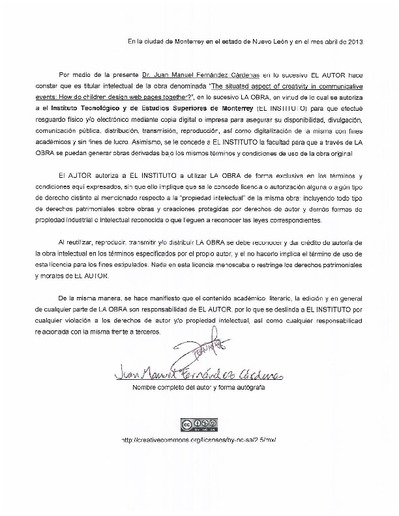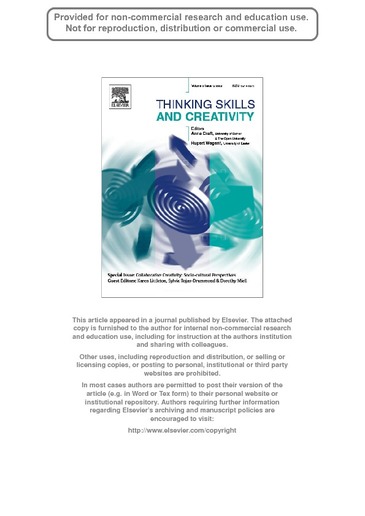Mostrar el registro sencillo del ítem
The situated aspect of creativity in communicative events: How do children design web pages together?
| dc.contributor.author | Fernández Cárdenas, Juan M. | en |
| dc.date.accessioned | 2015-09-18T13:48:36Z | en |
| dc.date.available | 2015-09-18T13:48:36Z | en |
| dc.date.created | 2008 | en |
| dc.date.issued | 2013-04-24 | en |
| dc.identifier.uri | http://catedra.ruv.itesm.mx/handle/987654321/648 | en |
| dc.identifier.uri | http://hdl.handle.net/11285/577989 | en |
| dc.description.tableofcontents | 1. Literacy and ICT, 2. Creativity and literacy, 3. Situated activity systems, 4. Characteristics of the study, 5. Analytical framework, 6. Communicative events, 7. Analysis, 8. Creativity in communication, 9. Conclusion | en_US |
| dc.format.extent | 15 | en_US |
| dc.format.medium | Documento escrito original | en_US |
| dc.language.iso | eng | en |
| dc.relation.requires | "Requiere contar con el software Adobe Acrobat Reader versión 3 o superio | en_US |
| dc.rights.uri | http://creativecommons.org/licenses/by-nc-nd/4.0/ | * |
| dc.title | The situated aspect of creativity in communicative events: How do children design web pages together? | en_US |
| dc.type | Elemento / Element | en |
| dc.coverage | This paper looks at the collaborative construction ofweb pages in History by a Year-4 group of children in a primary school in the UK. The aim of this paper is to find out: (a) How did children interpret their involvement in this literacy practice? (b) How the construction of web pages was interactionally accomplished? and (c) How can creativity be identified in interaction? Using an ethnographic approach to the study of communication, it is argued that the collective and creative construction of meaning can be understood in terms of relationships amongst components of communicative acts. The analysis of these components reveals how participants shape their utterances as they are engaged in the pursuit of shared goals in a situated activity system. It is argued that participants strive to become members of a community of practice designing web pages. Members of this community showed their understanding in relation to the way they interpreted the design rules for a multimodal text, the means forworking together in collaboration and distributing roles, aswell as their interpretation of what counts as historical knowledge. Also, in terms of creativity, participants managed to communicate and negotiate their intentions by using several figures of speech and language games, as well as contextually framing their positions as participants in a dialogue. That is, children and teacher demonstrated their creative abilities in a textual, contextual and critical level. It is concluded that creativity is not a gifted capacity; it is an everyday act which is interactionally accomplished in the context of social participation as members of a community. Members creatively display their intentions and negotiate new alternatives for the interpretation of actions in situated activity systems. | en_US |
| dc.subject.keyword | Collaboration | en |
| dc.subject.keyword | Literacy | en |
| dc.subject.keyword | Multimodality | en |
| dc.subject.keyword | Practice | en |
| dc.subject.keyword | Creativity | en |
| dc.subject.discipline | Ciencias Sociales / Social Sciences | |
| dc.agent.name | Ramírez Montoya, María S. | es |
| dc.agent.name | Burgos Aguilar, José V. | es |
| dc.educationLevel | Posgrado | en_US |
| refterms.dateFOA | 2018-03-07T05:44:04Z |
Ficheros en el ítem
Este ítem aparece en la(s) siguiente(s) colección(ones)
-
Artículo 1151
Article


